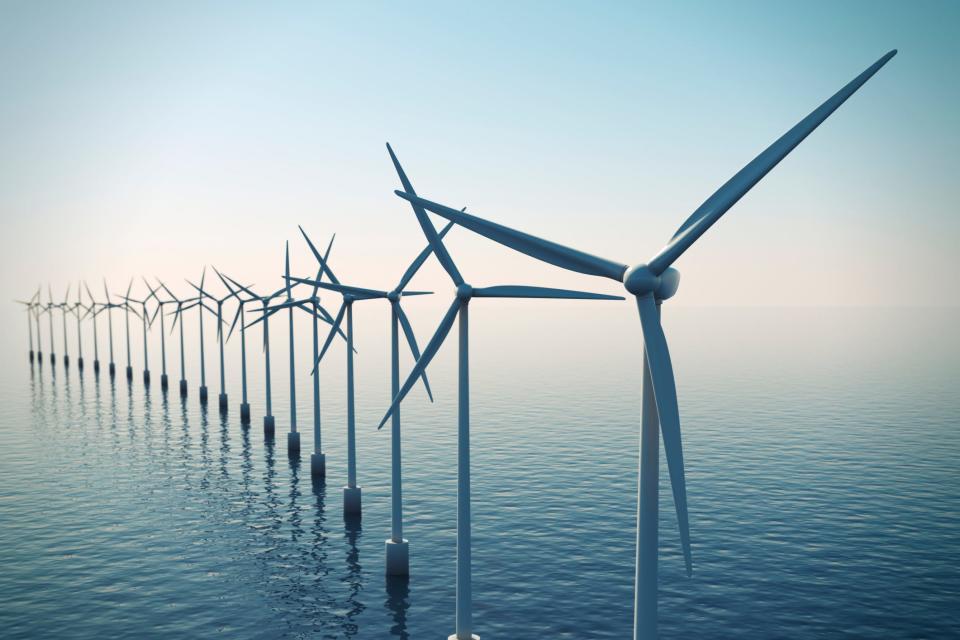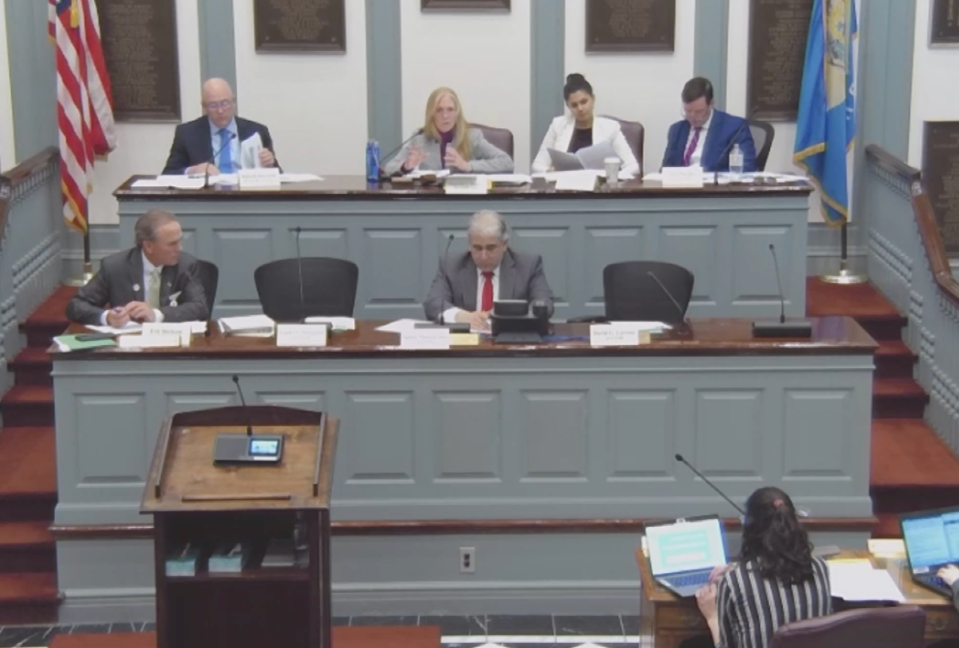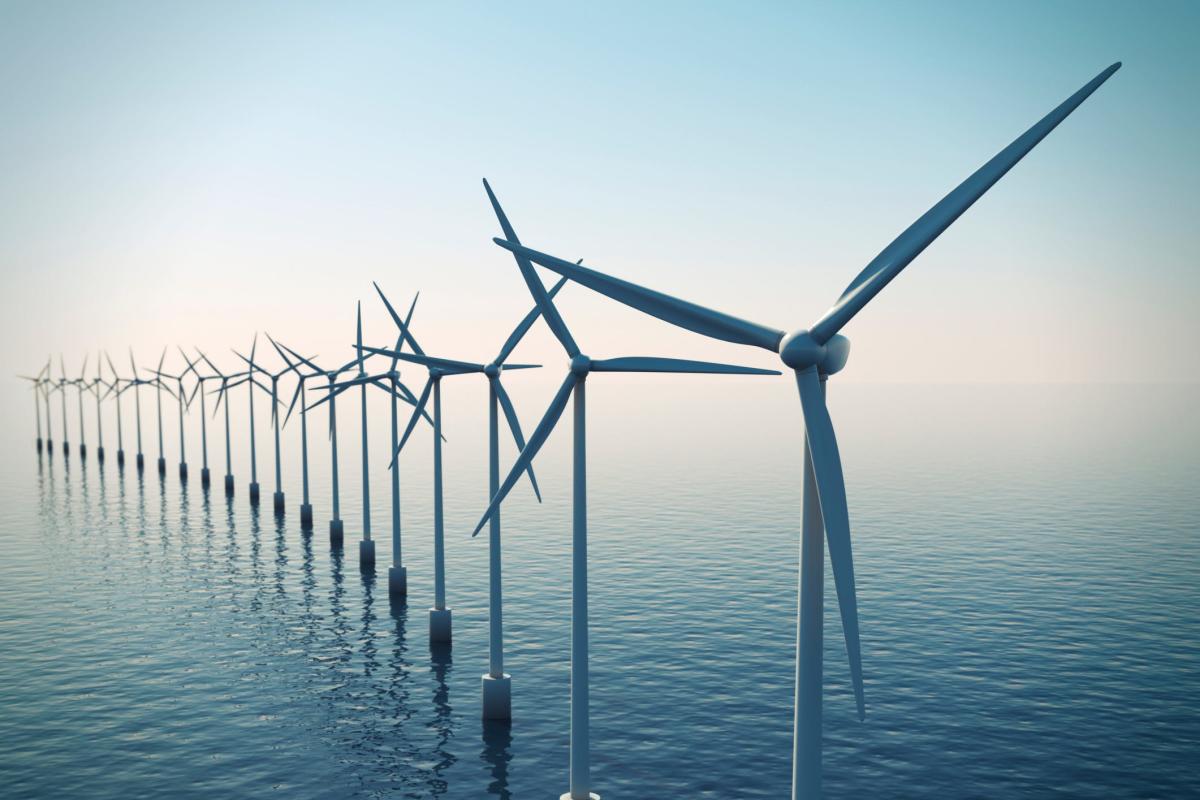Delaware’s process of obtaining offshore wind power is one step closer to being ratified.
Senate Bill 265, which lays out the various checks and balances that an offshore wind project would have to go through to get approved, was presented to the Senate’s Environment, Energy & Transportation Committee on Wednesday, April 24.
The 19-page bill outlines the various state departments that would be tasked with negotiating and approving an offshore wind project off of Delaware’s shores or obtaining energy from a project off the shores of other states.
SB 265, or the Delaware Energy Solutions Act of 2024, was heralded by environmentalists as a major win and a big step for the state in reaching its clean energy goals, but there are still opponents who worry about its economic feasibility and potential impacts on tourism.
The bill also may pave the way for other larger-scale clean energy projects that rely on sources like solar power.
Years of studies and planning have led to the drafting of the bill, which was approved by the Environment Committee and will now be assigned to the Senate’s Finance Committee.
Here’s what to know.
What led to this bill?

Sponsored by Sen. Stephanie Hansen, Delaware Energy Solutions Act of 2024, uses many of the findings and recommendations of the past few years and sets up a process which renewable energy projects can follow to set up operations in Delaware, and allow the state to reduce its reliance on energy imports.
Delaware’s Climate Change Solutions Act of 2023 and Climate Action Plan of 2021 establish greenhouse gas emission reduction targets for the state to reach. They both also require the state to adopt strategies to ensure that greenhouse gas emissions will be at or below net zero by Jan. 1, 2050. Encouraging and promoting the use of renewable energy alternatives has been named a key part of reaching these goals.
Last August, A bill passed which directed the state’s environmental agency to work with transmission company PJM to study the possibility of offshore wind development, creating a report for the governor and General Assembly about the findings.
Late 2023, Gov. Carney and US Wind began informal negotiations about using Delaware’s shore to support Delmarva wind projects.
“Thankfully, we have the benefit of taking the best outcomes from our neighbors to make sure we are moving forward in a strategic and deliberate manner to create the best and most affordable results for Delawareans,” Hansen said. “I want to be clear that the bill I introduced today does not automatically give the green light for any offshore wind projects. What it does is establish the specific terms and conditions under which the State of Delaware will be willing to permit a qualified and experienced developer to move forward with a cost effective offshore wind farm project, securing a cleaner, more sustainable future for our children and grandchildren.”
What does the bill say?


The bill lays out an exhaustive process by which offshore wind companies interested in investing in Delaware will have to undergo.
Essentially, three sections of the Delaware code will be adjusted with this bill. Those three sections would relate to highways and roadways (Title 17), public utilities (Title 26) and state government agencies (Title 29). Under the bill, Delaware’s Department of Transportation, State Energy Office, Renewable Energy Task Force and the Public Service Commission all have a say in ultimately approving an offshore wind project.
A solicitation process to find an appropriate wind project would begin with the State Energy Office putting out requests for proposals after evaluating whether the market conditions are feasible for Delaware to get involved. The State Energy Office is limited to procuring between 800 and 1,200 megawatts of energy to Delaware’s utilities.
One of the major components of the bill has to do with the cost of the wind energy. In the bill’s text it states that the cost per megawatt cannot exceed 110% of the “Delaware Benchmark Price,” which is essentially the average price that Delaware customers have been paying for power over the preceding three years.
To be considered, solicitations must have a term length of at least 20 years, stay under 110% of the Delaware Benchmark Price and specify the economic and health benefits, avoided greenhouse gas emissions, impact to energy bills and impacts to the regional electric grid.
The Renewable Energy Task Force, Public Service Commission and the State Energy Office have a series of checks and balances among their departments that would ensure that the solicitation would be consistent with Delaware’s climate goals. If a municipal electric company or rural electric cooperative wants to opt into the offshore wind’s project, they have that option, although aren’t required.
Contract terms would be negotiated based on the project’s potential costs and benefits, health benefits, avoided greenhouse gas emissions and more before the Public Service Commission issues their final order. But before a project can be built, the applicant must get proper permits from The Public Service Commission and DelDOT, who must give the OK to applicants who want to attach transmission lines through any state roadways.
This is where the language of the bill gets broader. Renewable energy interconnection facilities, which include any transmission lines or other equipment to connect any solar, wind or other renewable energy projects to the PJM transmission system, will be “encouraged as an integral part of the Delaware state infrastructure.”
This means that large-scale renewable energy projects, not just offshore wind, will be able to go through a similar process to get started.
“This bill is more than just about offshore wind,” Sen. Hansen said during the hearing. “This bill is setting up large interconnection with renewable energy generation into our state. Whether that’s wind, solar, or something else.”
The Public Service Commission and DelDOT would continue to evaluate the project based on its potential impacts to the health and safety of Delawareans and infrastructure of nearby roads, among other factors.
Reactions from the public
Most public comments presented during the Senate Committee hearing Wednesday afternoon were in support of the bill.
“This bill sets the stage for Delaware to finally get involved in the offshore wind industry and get clean power to Delawareans at a highly competitive price,” said Dustyn Thompson, director of the Sierra Club’s Delaware Chapter. “It’s more than cutting climate pollution, it’s also about cutting air pollution. Every megawatt of power that we purchase from offshore wind or other clean energy resources is a megawatt of coal or gas that we’re not purchasing.”
Beverage packing bill: Bill to ban plastic 6-pack rings introduced in General Assembly
Water quality issues: Delaware water systems don’t meet new PFAS standards. Is your water impacted?
Thompson also stated how the bill also could allow for Delaware to establish a more self-sustaining energy economy, since the state currently only produces less than around 10% of the energy it uses.
“Delaware is a net importer of energy and a lot of that energy comes from dirty fossil fuel plants to the west of us,” Thompson said. “The more we switch over to clean energy, the less we have in terms of air pollution coming in from the west.”
However, David Stevenson, director of the Center for Energy & Environment with independent thinktank Caesar Rodney Institute, has been a vocal opponent of offshore wind development in Delaware, with concerns that energy bills will increase and Delaware’s tourist economy will ultimately suffer.
Other concerns brought up during the Committee hearing had to do with Danish energy company Orsted, which pulled out of two offshore wind projects planned off the New Jersey coast, citing inflation and supply chain problems.
Molly McVety covers community and environmental issues around Delaware. Contact her at mmcvety@delawareonline.com. Follow her on Twitter @mollymcvety.
This article originally appeared on Delaware News Journal: Offshore wind takes another step forward in Delaware. Here’s what to know.
